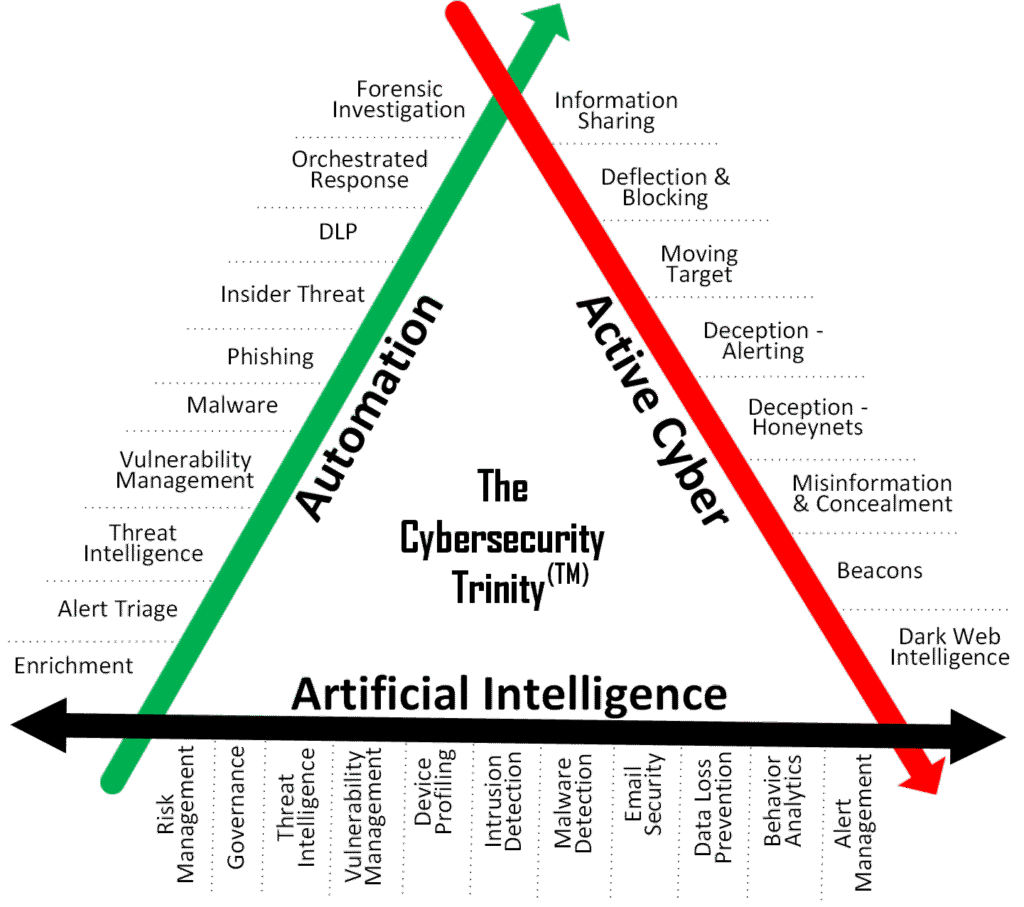Cybersecurity today is a race against time—and machines. With AI-powered threats evolving faster than ever and traditional defenses struggling to keep up, security teams face unprecedented pressure. Manual playbooks, static defenses, and siloed tools are no longer enough.
That’s why I wrote The Cybersecurity Trinity: AI, Automation, and Active Cyber Defense. The book introduces a practical, integrated model for defending against machine-speed adversaries using machine-speed capabilities and aligning strategy with real-world operational needs.
The Three Pillars of Modern Defense
At the heart of the book is the Cybersecurity Trinity Framework, a model built on three interdependent pillars:
- AI-Powered Security – Using artificial intelligence to detect threats, analyze signals, and adapt defenses in real time.
- Intelligent Automation – Accelerating response and reducing burden through orchestration, SOAR, and workflow automation.
- Active Cyber Defense – Proactively disrupting adversaries through deception, misinformation, and concealment.
Individually, each pillar adds value, but when implemented together, they form a force multiplier for resilience, speed, and strategic alignment.

Why This Framework Matters
The cybersecurity community is inundated with tools and jargon, but often lacks a unified strategy that bridges operational realities with future-facing challenges. This book was designed to help:
- CISOs build strategic alignment between AI initiatives and SOC operations.
- Security architects and engineers modernize detection and response pipelines.
- Executives understand the role of active defense without overstepping legal or ethical lines.
Real-World Insights
Drawing on my 30+ years of experience in information technology and cybersecurity, including my tenure as a Principal Security Researcher at Mastercard and my current role as Virtual Chief AI Officer (vCAIO), I have included real-world case studies, adversarial examples, and operational playbooks.
The book also explores how to align this Trinity with the NIST CSF, offering clear guidance for integrating AI and automation into risk-based, governance-ready strategies.
What’s Next?
I’m already preparing a follow-up: AI Strategy and Security: A Roadmap for Secure, Responsible, and Resilient AI Adoption, which is scheduled for release in Fall 2025. This book will help organizations to responsibly and securely adopt AI aligned with their business strategy and objectives.
Final Thoughts
The threat landscape has changed. We can no longer defend against autonomous threats with manual responses.
The Cybersecurity Trinity is my contribution to a smarter, faster, and more adaptive approach to modern cyber defense. I hope you’ll read it, and more importantly, I hope it sparks new conversations about what’s truly possible when AI, automation, and active defense are combined.
🔗 The Cybersecurity Trinity on Amazon
📘 Connect with me on LinkedIn